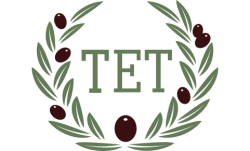Three fava bean recipes from Maestro Martino’s 1465 cookbook. One is with dried beans and a warming spiced fruit topping, and the other two are with fresh beans, the first with fruit and spices, and the second with fresh herbs. Historical Italian Cooking.
"Rafioli" three ways - Libro per cuoco
A bit of ravioli history. The first known recipes for ravioli are recorded in the 14th-century collection referred to as Anonymous Venetian or Libro per cuoco. You might be surprised to learn that the pasta wrapper on the outside was an ‘extra’ not necessarily a ‘plus’ at that point in time. Here I unveil all three of the ravioli recipes and how to prepare them in your own kitchen. Historical Italian cooking.
Sweet Spice mix
This spice mix is recorded in Bartolomeo Scappi’s cook bookOpera (1570). It is a Medieval mix that persevered through to the Renaissance, though every chef would have put his (alas, in Italy, yes) signature mark on it. This is a reference page that will function as a link for the verious occasions in which this genreral spice mixture is required on The Eternal Table.
Verjuice: The Green Revelation
Verjuice is a sour condiment made from the juice of unripe grapes that adds an acidic zing due to the presence of tartaric and malic acid and is an essential staple of historical Italian cookery. The Italian word agresto derives from Latin, directly referring to its sour quality rather than the color. Its use in Italy dates back to antiquity, although the stability and and popularity of balsamic vinegar and widespread cultivation of the less perishable lemon, which started in the 15th century, would eventually make verjuice obsolete.
Bockenheim’s Herbulatum
In 1417, the papacy came full circle back to Rome ending an extended stint in Avignon. In that same year, Johannes of Bockenheim assumed his office as the cook to the papal court, though not for the pope himself. Rome was in an upsurge of cultural activity, moving steadily toward the Roman Renaissance.






